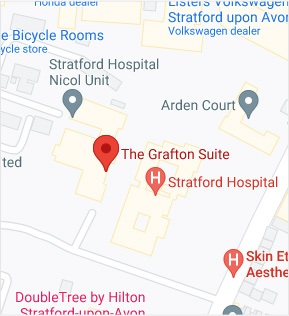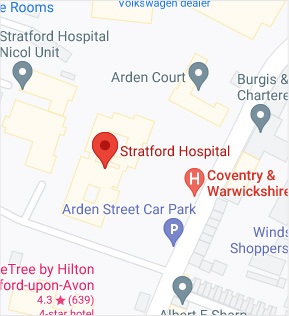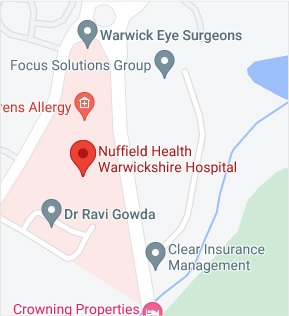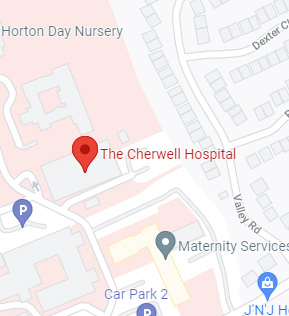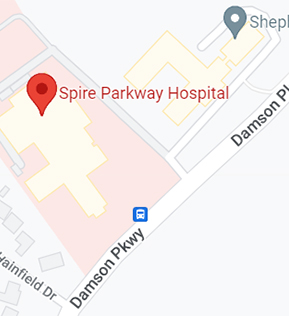Procedure
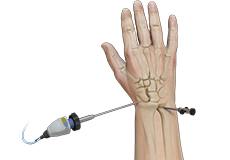
Wrist Arthroscopy
Wrist arthroscopy is a minimally invasive surgical procedure performed to view, diagnose and treat problems of your wrist joint.
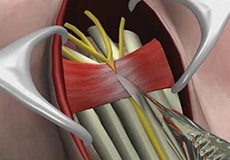
Carpal Tunnel Release Surgery
Carpal tunnel syndrome is a common, painful, progressive condition that is caused by the compression of the median nerve at the wrist area. The common symptoms of carpal tunnel syndrome include numbness and tingling sensation in all the fingers except the little finger, pain and burning sensation in your hand and wrist that may radiate up the arm and elbow, and weakness in hand with diminished grip strength.
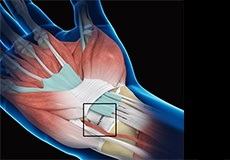
Wrist Ligament Reconstruction
Ligament reconstruction procedure can be performed as day surgery under local or general anaesthesia. During the procedure, your surgeon first makes an incision over your wrist joint to locate the torn ligament. Once located, a tendon graft (tissue obtained from a donor part, usually the palmaris longus tendon of the same wrist) is used to replace the torn ligament.
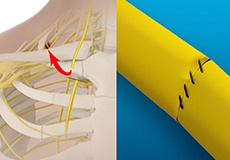
Nerve Transfers
A nerve transfer is a surgical procedure in which a portion of a healthy nerve is transferred to the site of a damaged nerve. This procedure is performed to restore normal function at the injured site. Healthy nerves that are near the site of injury and have a similar function to the injured nerve are ideally selected as donor's nerves to improve surgical outcomes.
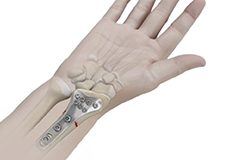
Wrist Open Reduction and Internal Fixation
Open reduction and internal fixation of the wrist is a surgical technique employed for the treatment of severe wrist fractures to restore normal anatomy and improve range of motion and function.
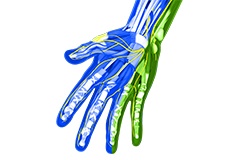
Peripheral Nerve Repair
The peripheral nerves are the nerve fibres that compose the area from head to toe, connecting the brain and spinal cord with the rest of the body parts. Nerves transmit electrical impulses and signals to and from the brain.
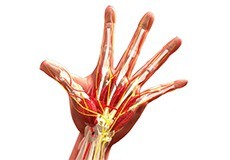
Microvascular Surgery
Microvascular surgery or microsurgery is a surgical technique for joining or repairing the damaged blood vessels and nerves during reconstructive surgery of body parts. Reconstructive surgery restores the functioning of the body parts by improving circulation.
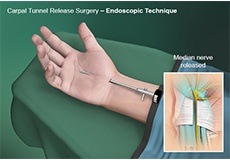
Endoscopic Carpal Tunnel Surgery
When conservative treatment options are not effective, surgery may be recommended. Endoscopic Carpal Tunnel Release surgery is advised: when symptoms of pain and weakness do not improve after a long period of conservative treatment.
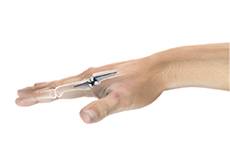
Surgery for Thumb and Digit Arthritis
Arthritis is an inflammatory condition of the joints. There are several types of arthritis; the most common type is osteoarthritis or wear-and-tear arthritis that affects the joint at the base of the thumb. Thumb arthritis is more common in women than men, and usually occurs after the age of 40 years.
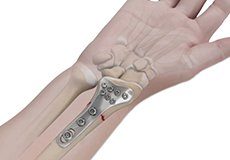
Hand Fracture Surgery
Hand surgery is performed to restore the structure and functionality of the fingers, wrist and hand secondary to a traumatic injury, medical condition, severe infection, or birth defect causing pain and/or deformity of the hand.
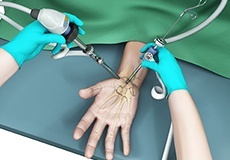
Elective Emergency Hand Surgery
Hand surgery is performed to restore the structure and functionality of the fingers, wrist and hand secondary to a traumatic injury, medical condition, severe infection, or birth defect causing pain and/or deformity of the hand. It is performed by trained and certified plastic surgeons.
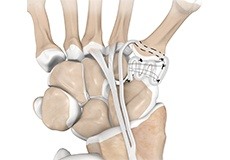
LRTI (Ligament Reconstruction and Tendon Interposition) for Thumb CMC Arthritis
LRTI (ligament reconstruction and tendon interposition) is a surgical procedure that is most commonly conducted to treat thumb CMC (carpometacarpal) arthritis where the damaged joint surfaces are removed and replaced with a cushion of tissue that keeps the bones separated.
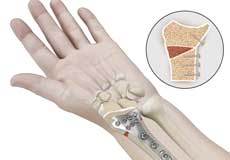
Osteotomy for Distal Radius Malunion
Osteotomy is a surgical procedure to cut and reshape deformed bones. Your doctor recommends osteotomy to correct distal radius malunion when non-surgical options such as splinting or physiotherapy are unsuccessful.
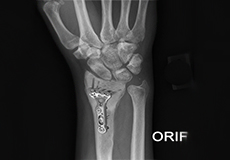
ORIF of Distal Radius Fracture
The forearm consists of two bones, the radius and ulna. The radius is the larger of the two forearm bones, and the region towards the wrist is called the distal end. A fracture or break in the distal end of the radius bone is known as a distal radius fracture.
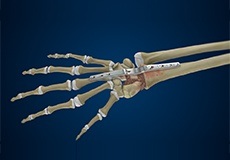
Total Wrist Arthrodesis
Arthrodesis is the surgical immobilization of a joint by the fusion of the adjacent bones. Total wrist arthrodesis, also known as wrist fusion, is a surgical procedure in which the wrist joint is stabilized or immobilized by fusing the forearm bone (radius) with the small bones of the wrist.
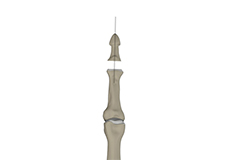
Finger Joint Fusion
Finger joint fusion is performed under local or general anaesthesia and usually takes about 2 hours to complete. A cut is made over the back of the finger joint and the soft tissues and nerves are carefully moved aside to expose the damaged joint.
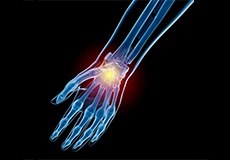
Sports Injury Management of Hand, Wrist and Elbow
When you suffer an injury during sports events, never try to continue the activity in pain because it may cause further harm. Some injuries may require prompt attention by a doctor, while others can be treated at home.
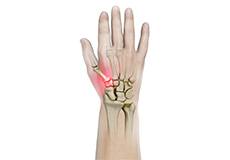
LRTI for Thumb CMC Arthritis
LRTI (ligament reconstruction and tendon interposition) is a surgical procedure to treat CMC arthritis.
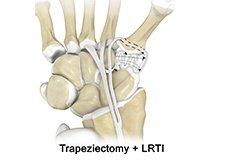
Trapeziectomy
Trapeziectomy is a surgical procedure to treat a medical condition called “thumb base arthritis”. The procedure involves removal of a small, cube-shaped bone known as the “trapezium” at the base of the thumb joint which joins your thumb to your wrist.

ORIF of the Forearm Fractures
The forearm is made up of two bones, the radius and ulna. A break in both or either of the bones is known as forearm fracture. Forearm fractures can occur near the wrist, near the elbow, or in the middle of the forearm. A forearm fracture affects the ability to rotate your arm, as well as bend and straighten the wrist and elbow.
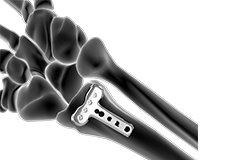
Wrist Fracture Fixation
Wrist fractures are breaks in any of the bones that form your wrist joint. Your wrist is made up of 8 small bones present in your hand and the adjacent ends of the 2 long bones of the forearm.
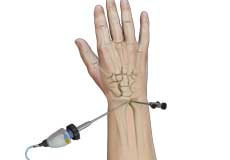
Distal Radioulnar Joint Arthroscopy
The distal radioulnar joint (DRUJ) is a pivot type synovial joint located between the radius and the ulna just proximal to the wrist joint and assists in pronation and supination of the forearm.
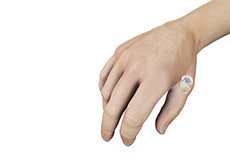
Cartiva Implant for the Thumb
Cartiva is a synthetic cartilage implant that can be used for the treatment of carpometacarpal (CMC) joint osteoarthritis of the thumb.
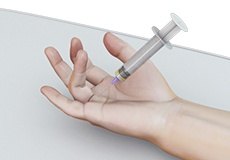
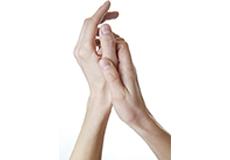
Hand Rejuvenation
Cosmetic enhancement is generally focused only on the face, while the hands portray some of the most prominent signs of ageing. With age, the hands lose their firmness and plumpness and can appear bony and fragile.
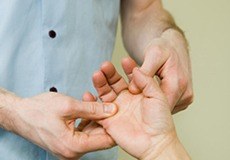
Hand Therapy
Hand therapy is a rehabilitation technique recommended to improve the strength and restore functional activity of hands in patients with upper extremity injuries. Hand therapy also helps in preventing injury.
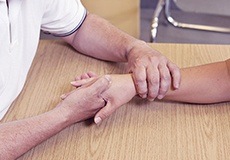
Non-Surgical Treatment of Hand and Wrist
The hand is one of the most flexible and useful parts of our body that enable us to perform many of our daily activities. The hands and wrists are prone to injuries or certain orthopaedic conditions and can range from minor cuts or burns to severe arthritis or injuries of nerves, bones, and tendons.
Conditions
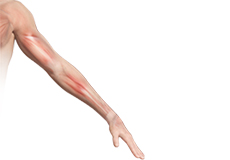
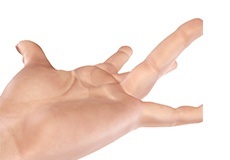
Dupuytren's Contracture
Dupuytren’s contracture is a hand condition where thickening of the underlying fibrous tissues of the palm causes the fingers to bend inward. This makes it difficult to fully straighten the affected fingers. It commonly occurs in the ring finger and little finger.
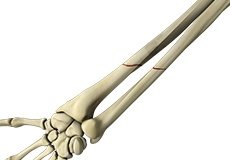
Adult Forearm Fractures
The forearm is made up of 2 bones, namely, the radius and ulna. The primary function of your forearm is rotation i.e., the ability to turn your palm up and down. The fracture of the forearm affects the ability to rotate your arm, as well as bend and straighten the wrist and elbow.
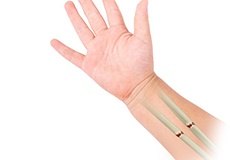
Paediatric Forearm Fracture
Forearm fractures in children are caused due to a fall on an outstretched arm or direct hit on the forearm, which may result in breakage of one or both bones (radius and ulna).
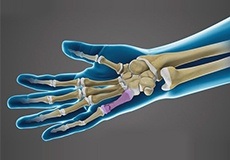
Wrist Fracture
The wrist is comprised of two bones in the forearm, the radius and ulna, and eight tiny carpal bones in the palm. The bones meet to form multiple large and small joints. A wrist fracture refers to a break in one or more of these bones.
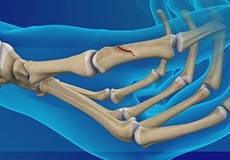
Thumb Fracture
A break or a crack in the bones of the thumb is known as a thumb fracture. Fractures may occur anywhere on the thumb, but a fracture at the base of the thumb, near the wrist, is considered the most serious.
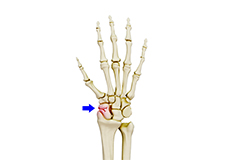
Scaphoid Facture
Scaphoid fracture occurs due to a fall on an outstretched hand with complete weight falling on the palm. This fracture usually occurs during motor accidents or sports activities.

Fractures of the Hand and Fingers
The hand is one of the most flexible and useful parts of our body. Because of overuse in various activities, the hands are more prone to injuries, such as sprains and strains, fractures and dislocations, lacerations and amputations while operating machinery, bracing against a fall and during sports.
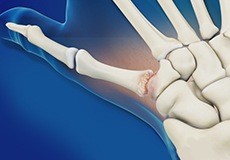
Arthritis of the Thumb
Arthritis is an inflammatory condition of the joints. There are several types of arthritis. The most common type is osteoarthritis or wear-and-tear arthritis that affects the joint at the base of the thumb. Thumb arthritis is more common in women than men, and usually occurs after the age of 40 years.
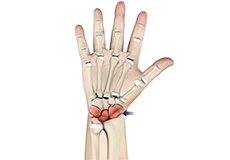
Arthritis of the Hand and Wrist
Arthritis is an inflammatory condition of the joints. There are several types of arthritis and the most common type is osteoarthritis or wear-and-tear arthritis. Arthritis affects various joints in the body and the arthritis in the hand affects the joint at the base of the thumb. Arthritis may also affect the joints of other digits.

Carpal Tunnel Syndrome
Carpal tunnel syndrome is a common, painful, progressive condition that is caused by compression of the median nerve at the wrist area.
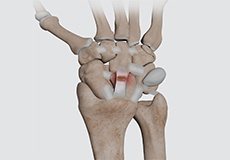
Wrist Ligament Tear and Instability
A ligament is a strong, flexible band of fibrous tissue. The wrist has many ligaments that help to keep the wrist bones in proper position providing stability to the joint. A torn ligament causes the wrist bones to move out of their position, which in turn leads to wrist instability as the sprained (torn) ligament can no longer support the wrist bones.

Wrist Sprain
Injuries caused due to stretching or tearing of the ligaments in the wrist are called wrist sprains. Sprains can range from mild to severe, based on the extent of injury to the ligament.
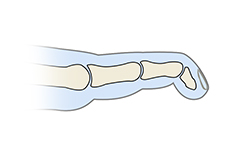
Mallet Finger
A mallet finger is a condition where the end of the finger is bent and does not straighten. Mallet finger occurs when the extensor tendon at the back of the finger is damaged.
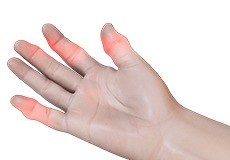
Finger Sprain
Injuries that involve tearing or stretching of the ligaments of your fingers are termed as sprains. Sprains in the fingers are most often caused from a fall when you extend your arms to reduce the impact of the fall, or from overuse or repetitive activity of the thumb such as with texting.
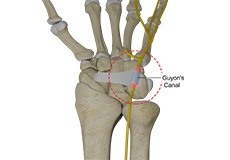
Ulnar Nerve Compression in Guyon's Canal
Ulnar nerve compression in Guyon’s canal is a condition characterized by pain, numbness, weakness, and tingling sensation in the hand. The condition occurs when the ulnar nerve, the nerve that travels across the elbow from the shoulder to the hand, is compressed as it goes from the wrist into the hand through a space known as Guyon’s canal.
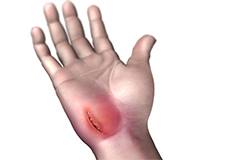
Industrial Hand Trauma
The hand is one of the most flexible and useful parts of our body. Because of overuse in various activities, the hands are more prone to injuries, such as sprains and strains, fractures and dislocations, lacerations and amputations while operating machinery, bracing against a fall and during sports.
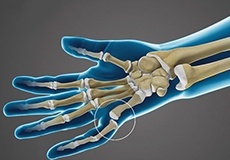
Finger Dislocation
Finger dislocation is a condition in which the bone of your finger has moved away from its normal position. Dislocation can be caused from jamming or overextending the finger during sports activities or a fall on an outstretched hand.
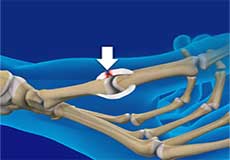
Gamekeeper's Thumb
Gamekeeper's thumb, also known as skier's thumb, is a tear of the ulnar collateral ligament, a band of tissue that supports the joint at the base of the thumb.
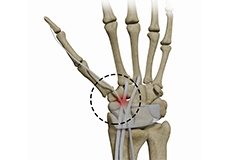
Distal Intersection Syndrome
Distal intersection syndrome also referred to as tenosynovitis of the radial wrist extensors is characterized by the radial wrist and forearm pain. Distal intersection syndrome is tenosynovitis of the third extensor compartment (extensor pollicis longus) where it crosses the second extensor compartment.
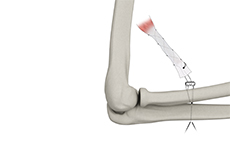
Distal Biceps Avulsion
The biceps muscle, located in the front of the upper arm, allows you to bend the elbow and rotate the arm. Biceps tendons attach the biceps muscle to the bones in the shoulder and in the elbow.
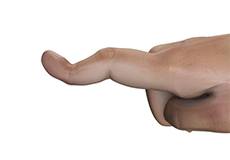
Boutonniere Deformity
Tendons in your fingers connect the finger bones to finger muscles and help bend and straighten the finger at the joint when the muscles contract. Boutonnière deformity is a condition in which a tendon injury to the middle joint of the finger results in the inability to straighten the affected finger.
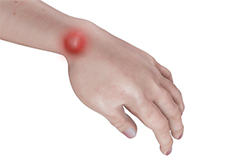
Ganglion Cyst
Ganglion cysts are swellings that most commonly develop along the tendons or joints of wrists or hands. They can be found either at the top of the wrist, palm side of the wrist, end joint of a finger or at the base of a finger. A ganglion cyst is not cancerous and will not spread to the other parts of the body.
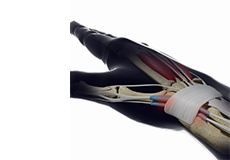
De Quervain's Tendinosis
Inflammation and swelling of the tendon sheaths put pressure on the adjacent nerves and leads to pain and numbness in the thumb side of the wrist. Strain on these tendons can cause swelling and irritation, and lead to a condition called De Quervain's tenosynovitis, which is characterized by inflammation.

Trigger Finger
Inflammation in the tenosynovium leads to a condition called trigger finger, also known as stenosing tenosynovitis or flexor tendonitis, where one of the fingers or thumb of the hand is caught in a bent position. The affected digit may straighten with a quick snap, like pulling and releasing the trigger on a gun, hence the name trigger finger.
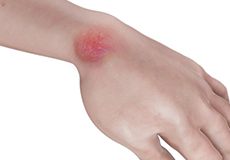
Hand Infections
Hand infections, if left untreated or treated improperly, can cause disabilities such as stiffness, contracture, weakness, and loss of tissues (skin, nerve and bone) that will persist even after the infection resolves. Therefore, prompt treatment of hand infections is important.
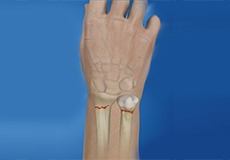
Wrist Injuries
The wrist is a commonly injured joint in the body. Problems include sprains and strains as well as fractures that can occur with lifting and carrying heavy objects, while operating machinery, bracing against a fall, or from sports-related injuries.
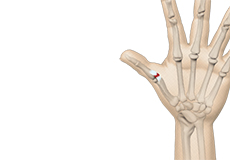
Skier's Thumb
Skier's thumb, also known as, Gamekeeper's thumb is a tear of the ulnar collateral ligament, a band of tissue that supports the joint at the base of the thumb. Damage to the ulnar collateral ligament may lead to chronic instability of the thumb, creating problems in its normal functioning.
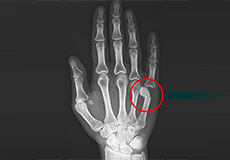
Boxer's Fracture
A boxer’s fracture is a break in the neck of the fifth metacarpal bone of the hand (below the pinky finger) close to the knuckle. The hand is composed of 3 types of bones: carpal or wrist bones, metacarpals or long hand bones, and phalanges or finger bones. Metacarpals consist of five long bones that connect the carpal with the phalanges.
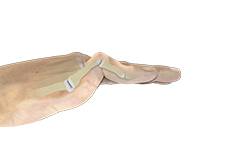
Swan Neck Deformity
Swan neck deformity is a condition in which the tip of the finger is bent down (DIP flexion) and the middle joint is bent back more than normal (PIP hyperextension). Swan neck deformity can affect any finger, except the thumb.
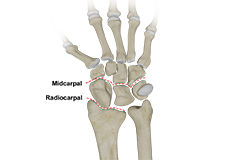
Carpal Instability
Carpal instability is the loss of alignment of the carpal bones and/or radioulnar joint. The wrist is a complex joint that connects the forearm to the hand and allows it to move. It consists of 8 small bones called carpals that articulate with two long bones of the forearm (radius and ulna).
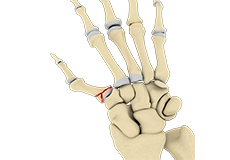
Bennett's Fracture
Bennet’s fracture is a break at the base of the first metacarpal bone (thumb bone) that meets the wrist at the first carpometacarpal (CMC) joint. The hand is composed of 3 types of bones: carpals or wrist bones, metacarpals or long hand bones, and phalanges or finger bones.
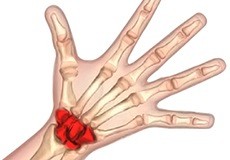
Kienbock's Disease
Kienbock's disease is a condition in which the lunate, one of the small bones of the wrist loses its blood supply leading to death of the bone. This results in pain, stiffness, and degenerative changes in the wrist joint.
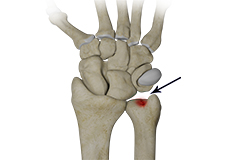
Ulnar Carpal Impaction
Ulnar carpal impaction also referred to as ulnar impaction syndrome or ulnar abutment or ulnocarpal loading, is a common cause of ulnar sided wrist pain. It is a degenerative condition in which the ulnar head impacts the ulnar-sided carpus and the triangular fibrocartilage complex (TFCC).
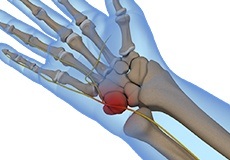
Guyon's Canal Syndrome
Guyon’s canal syndrome refers to compression of the ulnar nerve while it passes from the wrist into the hand through a space called the ulnar tunnel or Guyon’s canal.
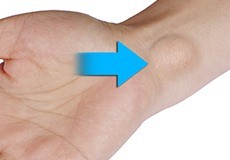
Hand Tumours
Any abnormal lump or bump on the hand is considered a hand tumour. Hand tumours can occur on the skin as a mole or a wart, underneath the skin soft tissue or on the bone. Most hand tumours are benign (non-cancerous); however, they can also rarely be malignant (cancerous).
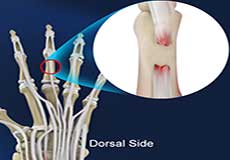
Extensor Tendon Injuries
Tendons are bands of tissue connecting muscles to bones. The extensor tendon is a strong, smooth cord that connects finger bones to muscles in the hand. Extensor tendons are located just under the skin, directly on the bone, on the back of the hand and fingers.
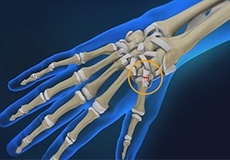
Work Related Hand Injuries
The hand is one of the most flexible and useful parts of our body that assist us in most workplace activities. Hand injuries can range from minor cuts or burns to severe injuries.
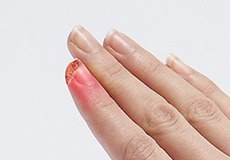
Fingertip Injuries
A fingertip injury is a wound or damage caused to the most distal portion of the finger. It can be a crush, a sharp cut, a tear or a combination of these, and can result in damage to the skin, nail or nailbed, tendon, pulp, bone, and nerve endings.
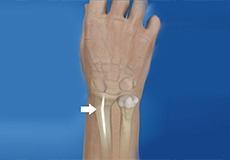
Malunion of a Fracture
Malunion of a fracture is a condition where the fractured ends of a bone heal in a misaligned position resulting in bone deformity. Malunions may occur in any bone fractures in the body often due to trauma.

Finger Joint Dislocation and Volar Plate Injury
Finger dislocation is a condition where the bones of your finger have moved away from its normal anatomical position. Dislocation can be caused by jamming or overextending the finger during sports activities or a fall on an outstretched hand.

Distal Radioulnar Joint (DRUJ) Instability
Distal radioulnar joint instability is the abnormal orientation or movement of the radius and ulna bones at the wrist in relation to one another. Injury to the tendons, ligaments and/or muscles stabilising the joint may cause partial or complete dislocation.
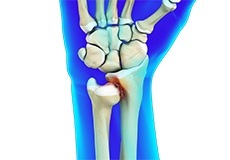
Distal Radioulnar Joint (DRUJ) Arthritis
Distal radioulnar joint (DRUJ) arthritis is an inflammatory condition characterized by gradual wearing away of the cartilaginous surface of the radioulnar joint resulting in significant pain, swelling, stiffness, and interference in the functioning of the wrist and/or arm.
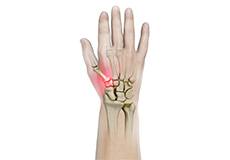
Trapeziometacarpal (TMC) Arthritis
Trapeziometacarapal (TMC) joint arthritis, also known as carpometacarpal (CMC) joint arthritis or basilar thumb arthritis or rhizarthrosis, is a common form of arthritis that affects the first carpometacarpal (trapeziometacarpal) joint of the thumb.
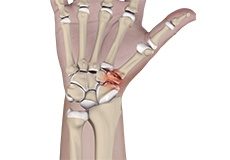
Triscaphoid Joint Arthritis
Arthritis is an inflammatory condition of one or more joints in your body. Triscaphoid joint arthritis is the localised pain and inflammation of the shared joint between the 3 carpal bones of your wrist. These bones are called scaphoid, trapezium and trapezoid and are present at the base of your thumb.
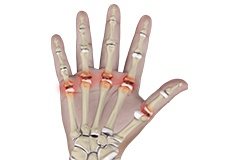
Metacarpophalangeal Joint Arthritis
The bones of the hand are called metacarpals and the bones of the fingers are called phalanges. The metacarpophalangeal joint or MP joint, also known as the first knuckle, is the large joint in the hand where the finger bones meet the hand bones.
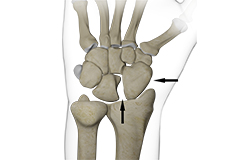
Scapholunate Dissociation
Scapholunate dissociation is the abnormal orientation or movement of the small bones of your wrist: the scaphoid and lunate, in relation to one another.
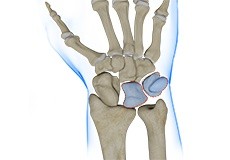
Triquetrolunate Instability
Triquetrolunate instability is the instability that takes place between the triquetrum or medial column and the lunate bones or the central column of the wrist. The triquetrum and the lunate comprise the ulnar side of the proximal carpal row at the wrist. This joint is supported by the lunotriquetral (LT) ligament.
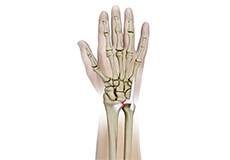
Triangular Fibrocartilage Complex Injury (TFCC)
The triangular fibrocartilage complex, or TFCC, is a complex of cartilage and ligaments located near the outer region of the wrist, below the little finger. It serves to stabilise the wrist, allowing easy movement and shock-absorption. Sports activities or falls can damage or injure the TFCC, causing wrist pain and instability.
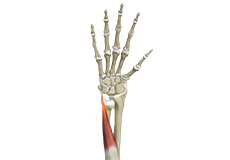
Extensor Carpi Ulnaris (ECU) Tendon Instability
ECU tendon instability can occur when the sheath covering and protecting the ECU tendon at the wrist is injured. This causes the tendon to move abnormally and occupy the wrong space within the sheath.
Hand Anatomy
The human hand is made up of the wrist, palm, and fingers and consists of 27 bones, 27 joints, 34 muscles, over 100 ligaments and tendons, and many blood vessels and nerves.
The hands enable us to perform many of our daily activities such as driving, writing and cooking. It is important to understand the normal anatomy of the hand to learn more about diseases and conditions that can affect our hands.
Bones of the Hand
The wrist is comprised of 8 carpal bones. These wrist bones are attached to the radius and ulna of the forearm to form the wrist joint. They connect to 5 metacarpal bones that form the palm of the hand. Each metacarpal bone connects to one finger at a joint called the metacarpophalangeal joint (MCP joint). This joint is commonly referred to as the knuckle joint.
The bones in our fingers and thumb are called phalanges. Each finger has 3 phalanges separated by two interphalangeal joints, except for the thumb, which has only 2 phalanges and one interphalangeal joint.
The first joint close to the knuckle joint is called the proximal interphalangeal joint (PIP joint). The joint closest to the end of the finger is called the distal interphalangeal joint (DIP joint).
The MCP and PIP joint act like hinges when the fingers bend and straighten.
Soft Tissues of the Hand
Our hand bones are held in place and supported by various soft tissues. These include articular cartilage, ligaments, muscles and tendons.
Articular cartilages are smooth material that act as shock absorbers and cushion the ends of bones at each of the 27 joints, allowing smooth movement of the hand.
Muscles and ligaments function to control the movement of the hand.
Ligaments are tough rope-like tissues that connect bones to other bones, holding them in place and providing stability to the joints. Each finger joint has two collateral ligaments on either side, which prevents the abnormal sideways bending of the joints. The volar plate is the strongest ligament in the hand. It joins the proximal and middle phalanx on the palm side of the joint and prevents backward bending of the PIP joint (hyperextension).
Muscles of the Hand
Muscles are fibrous tissues that help produce movement. They work by contracting.
There are two types of muscles in the hand:
- Intrinsic muscles are small muscles that originate in the wrist and hand. They are responsible for fine motor movements of the fingers during activities such as writing or playing the piano.
- Extrinsic muscles that originate in the forearm or elbow control the movement of the wrist and hand. These muscles are responsible for gross hand movements. They position the wrist and hand while the fingers perform fine motor movements.
Each finger has six muscles controlling its movement: three extrinsic and three intrinsic muscles. The index and little finger each have an extra extrinsic extensor.
Tendons of the Hand
Tendons are soft tissues that connect muscles to bones. When muscles contract, tendons pull the bones, causing the finger to move. The extrinsic muscles are attached to finger bones through long tendons that extend from the forearm through the wrist. Tendons located on the palm side help in bending the fingers and are called flexor tendons, while tendons on top of the hand called extensor tendons help in straightening the fingers.
Nerves of the Hand
Nerves of the hand carry electrical signals from the brain to the muscles in the forearm and hand, enabling movement. They also carry the senses of touch, pain and temperature back from the hands to the brain.
The three main nerves of the hand and wrist include:
- Ulnar nerve: The ulnar nerve crosses the wrist through an area called Guyon’s canal and branches to provide sensation to the little finger and half of the ring finger.
- Median nerve: The median nerve crosses the wrist through a tunnel called the carpal tunnel. The median nerve provides sensation to the palm, thumb, index finger, middle finger and part of the ring finger.
- Radial nerve: The radial nerve runs down the thumb side of the forearm and provides sensation to the back of the hand from the thumb to the middle finger.
All three nerves originate at the shoulder and travel down the arm to the hand. Each of these nerves has sensory and motor components.
Blood Vessels of the Hand
Blood vessels travel beside the nerves to supply blood to the hand. The main arteries are the ulnar and radial arteries, which supply blood to the front of the hand, fingers, and thumb. The ulnar artery travels next to the ulnar nerve through the Guyon’s canal in the wrist. The radial artery is the largest artery of the hand, travelling across the front of the wrist, near the thumb. Pulse is measured at the radial artery.
Other blood vessels travel across the back of the wrist to supply blood to the back of the hand, fingers and thumb.
Bursae of the Hand
Bursae are small fluid-filled sacs that decrease friction between tendons and bone or skin. They contain special cells called synovial cells that secrete a lubricating fluid.


 REQUEST AN APPOINTMENT
REQUEST AN APPOINTMENT



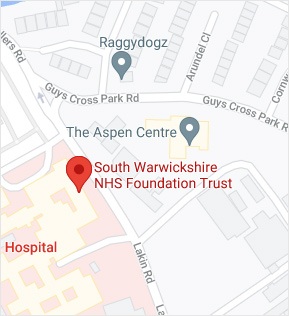
 Ext 4798
Ext 4798